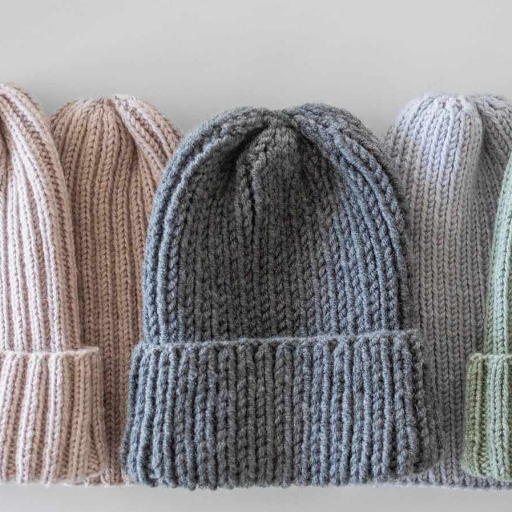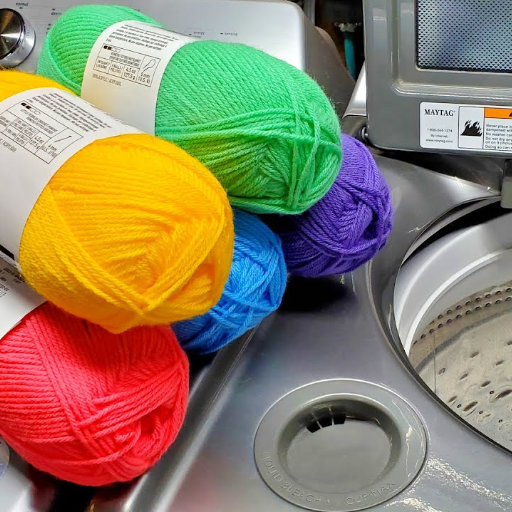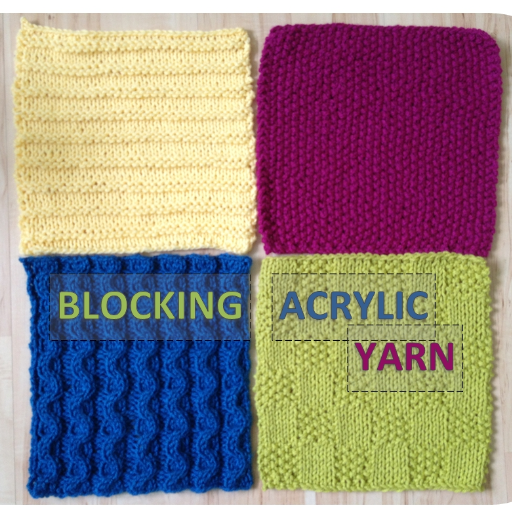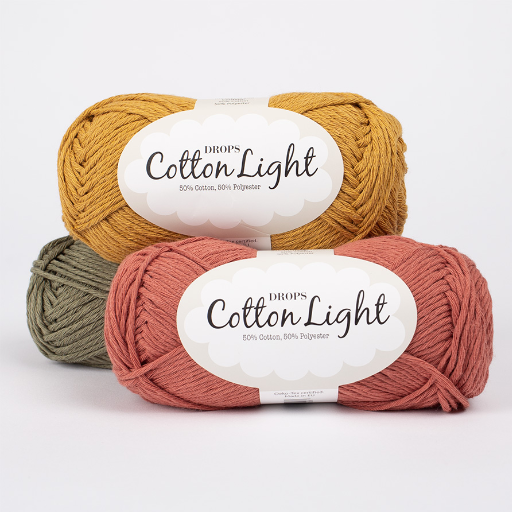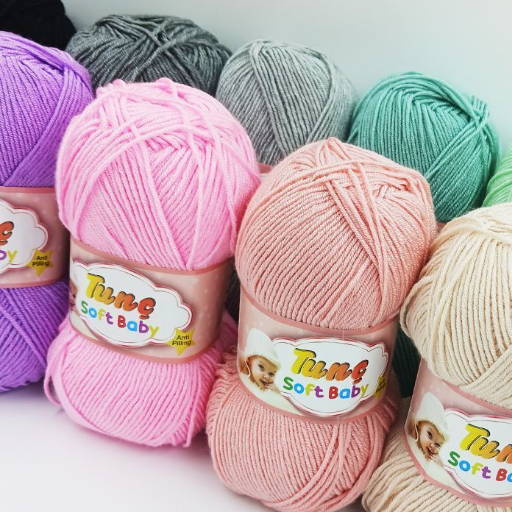Knitting enthusiasts and hobbyists alike are continuously drawn to the world of yarn for its endless possibilities and creative potential. Among the vast array of materials available, variegated sport yarn stands out as a versatile and visually captivating option especially suited for endless knitting projects. This guide focuses on the specific characteristics of acrylic yarn, a widely used, durable, and affordable fiber. From understanding its benefits to exploring practical applications, you will gain valuable insights into how acrylic variegated sport yarn can transform your knitting projects. Additionally, we will provide technical tips for selecting the right yarn for different projects and expert suggestions for achieving optimal results in every stitch. Whether you are a beginner seeking foundational information or an experienced knitter aiming to expand your repertoire, this comprehensive guide will serve as a valuable resource throughout your creative knitting endeavors.
What is Variegated Yarn and Why Choose Acrylic?

Variegated yarn is a type of yarn that is usually dyed in sets so that it creates eye-catching patterns when knitted or crocheted. The variation adds extra visual appeal which helps in accomplishing multicolored fashions without the need to frequently change the yarn.
Acrylic yarn is the best option because it is dependable, cheap, and serves multiple purposes. It is extremely lightweight and it can be washed in a machine. Also, it does not get worn out easily, which makes it suitable for products that need easy maintenance and last many years. Alongside, acrylic yarn also comes in different colors and finishes including variegated which opens the doors to many different innovations.
Understanding Variegated Patterns in Yarn
Variegated yarn is designed to alternate between two or more colors as you work, creating unique multi-hued patterns without requiring frequent yarn changes. These patterns can vary significantly depending on factors such as stitch size, yarn tension, and the type of project. Common patterns include stripes, pooling (where colors align to form noticeable blocks), or mottled effects.
The way variegated yarn behaves is influenced heavily by its dye technique. Some types are self-striping, ideal for achieving consistent bands of color, while others create unpredictable, more organic patterns through short color changes. To maximize results with variegated yarn, understanding your project’s dimensions and experimenting with stitch types is critical, as this can highlight the yarn’s color shifts or minimize them depending on your aesthetic preference.
The Benefits of Acrylic Yarn in Knitting
Knitters often prefer acrylic yarn because of its accuracy, cost, and durability. As a man-made material, it has exceptional resistance against fading, renewing, stretching, and wearing down. Perhaps its most important feature is the ease of maintenance it offers this yarn contains materials that can be used in modern washing machines without the user worrying about their fading or stretching. Due to these features items like scarves, blankets, and sweaters can be worn daily without constant worrying.
As a synthetic material, it is soft and very lightweight but it’s also hypoallergenic meaning it can be gifted or worn by people with sensitive skin. It is also available in various colors which include wool and even special finishes that can shimmer or change colors. On the downside, it is not very breathable but the low cost makes it ideal for experienced and beginner knitters alike. Remember to choose premium-class acrylic blends to avoid the dreaded pilling and static cling while maximizing the craft’s potential.
Comparing Acrylic to Cotton Yarn
There are pros and cons to every material which stands true with acrylic and cotton yarn. While acrylic yarn is economical, simple to maintain, and comes in an endless array of colors and textures which make it appropriate for novices or projects that need a creative splash. It also makes for great knitting as it is fade-resistant. Owing to its synthetic nature, it is also deficient in breathability and has a high risk of static cling which can lead to pilling.
But unlike acrylic, cotton thread has many benefits. It is perfect for breathing and absorbing moisture, making it suitable for lightweight clothing and summer projects. Moreover, it is hypoallergenic and long-lasting. While cotton is harder to knit with as there is no elasticity, it is much more stiff when compared to the soft, airy feel of acrylic. More durable than soft, that is cotton yarn can feel heavier. Oftentimes, cotton yarn gets the best of people learning how to knit as the lack of elasticity makes maintaining tension much harder. In the end, the most affordable options can be chosen which rely on the specific requirements of a project’s composition, purpose, feel, texture, and budget.
How Does Sport Weight Yarn Differ from Other Weights?

Sport weight yarn is a medium-lightweight option that sits between fingering weight and worsted weight yarns in terms of thickness. It typically measures around 12-18 wraps per inch (WPI) and produces a balanced fabric ideal for garments, accessories, and baby items. Compared to fingering weight, it is slightly thicker, offering more warmth and structure, while remaining lighter and more delicate than worsted-weight yarn. This makes it particularly versatile for projects requiring finer detail without sacrificing durability. Sport weight yarn is also commonly used for creating patterns with smooth drapes and crisp stitch definition.
Exploring Sport Yarn Characteristics
Sport weight yarn exhibits several defining characteristics that distinguish it from other yarn weights. It is slightly thicker than fingering-weight yarn, providing additional warmth while maintaining a lightweight profile. This balance makes it suitable for creating garments, accessories, and items that require a delicate yet durable structure. Typically categorized by a gauge of 5-6 stitches per inch on US size 3-5 knitting needles (3.25mm-3.75mm), sport yarn is known for its versatility and adaptability to various patterns, especially those demanding precise stitch definition and smooth draping.
Additionally, its medium-light thickness ensures projects feel neither bulky nor overly delicate, making it particularly favorable for baby clothes and textured stitch designs. Sport yarn’s slightly increased elasticity compared to finer yarns enhances its ease of use, aiding in maintaining consistent tension during knitting or crocheting. Most commonly available in natural fibers like wool or cotton and blends with synthetic fibers, sport yarn combines softness and strength, making it reliable for long-lasting, intricate projects.
Advantages of Sport Weight for Knitting Projects
The exceptional details and effects of knitting patterns and stitches can be defined and worked upon easily with slightly thicker yarns as compared to finer yarns. Threads of ski sweaters, shawls, and baby wear can balance and retain heat while also allowing the body to breathe easily due to sport weight yarn. Additionally, being a medium light furthers its appeal while also ensuring effortless knit working making it the ideal selection for beginners and advanced knitters alike. Like most sport weight yarns, it is made from soft and shallot natural materials like merino wool, cotton, or blended options providing it with long-lasting effects and attractive ease of care. Most importantly, it can deliver hollow but heavy knit items with ease besides achieving excellent drapes. Sport weight yarn is the preferred selection of knitters as it works well with different stitches under different patterns work. Finally, the look it delivers single-handedly makes it the utmost stitch option for whole-knit enthusiasts.
Finding the Right Weight Yarn for Your Projects
Choosing something as basic as a yarn weight requires assessing many things that would impact the result. Such as the goal of the project, the desired texture, and how the pattern is set will all back you make informed decisions. The lightest weight is lace and the heaviest is jumbo. So for every section, there is a specific weight that needs to be catered for. Lace or fingering weight yarns would be ideal for intricate, delicate work such as doilies or lace shawls. On the other side of the spectrum, for warmer garments like sweaters or blankets, worsted, bulky, and sport-weight yarns are more suitable.
When the required gauge of the pattern is set, making sure the yarn weight is appropriate will ensure that accuracy and consistency are bottomed. Also, the type of fiber is a crucial factor natural (like wool or cotton) or made from synthetic means (like acrylic), plays a huge role in comfort, durability, and how much care is needed. For specific use cases, specialized fibers would serve best, seeing as they affect stretch, breathability, and warmth. Various stitch types can be intimidating for beginners which is why easy-to-handle medium-weight yarns are set easiest to work with. By incorporating various aspects such as weight, texture, and fiber type, one would achieve balance which ultimately serves the purpose.
What Makes Yarnart Jeans Splash Unique?

Yarnart Jeans Splash is made from 55% cotton and 45% acrylic, making it stand out due to its unrivaled softness, durability, and lightweight feel. The multicolor speckled design is extremely vibrant and dynamic which makes it ideal for pedal-pushing garments or accessories. The yarn’s medium weight makes it simple to handle and versatile which is perfect for beginners and experienced crafters alike. In addition, it is washable in a machine, simplifying care and making it suitable for daily use. These features combined allow Yarnart Jeans Splash to stand out from its competitors and become the choice for many creative projects.
The Jeans Splash Color Palette
Not only does its name suggest an exact view of elegance, but the Yarnart Jeans Splash showcases a beautiful execution of magnificent multi-color blends. Each chromatic sketch captivates the viewer and adds unique appeal to every project. Each colorway has a speckled design with vibrant blends which produces a masterpiece out of every knitting or crochet project. The palette boasts strikingly bold versions of blue, optimistic yellow, and dashing red while also including soft grays, creams, and earthy browns. These colorways are designed to meet the needs of every modern-day playful vs subtle classicistic aesthetic. These striking pieces of art are meticulously designed which certifies the depth and consistency for which the Jeans Splash is known. As a result, denim splash can be used to create clothes, jewelry, and home decor pieces. Pick items from this exquisite collection & transform your vision into reality, utilizing the versatile charm of this yarn.
Ideal Projects for Yarnart Jeans Splash
If you run a clothing business, you will find that the stunning combinations of colors of yarn art jeans splash are perfect for a variety of designs. Yarnart Jean’s splash also has a beautiful composition combined with a soft and lightweight structure which makes it stunning for sweaters, summer tops, cardigans, and even for replenishing your wardrobe in the winter. This also means it is friendly to your skin, which means it’s useful in crafting accessories like scarves, gloves, beanies, and even bags and jewelry.
Yarnart Jeans Splash has the potential to make stunning home decor as well. For instance, add character to your home with stunning throw pillows, cozy blankets, or even amaazzingly plush toys. If you are a lover of crafted sculptures like amigurumi, or any intricate crochet and knitting designs, then this yarn is unparalleled in brilliance and offers depth and beauty to each design. Bold or subtle, this yarn exceeds all expectations.
Caring for Your Yarnart Creations
Proper care for your Yarnart creations ensures their longevity and maintains their quality and beauty. To clean these items, hand-wash them in lukewarm water with a mild detergent specifically formulated for delicate fabrics. Avoid vigorous scrubbing or wringing, as this could stretch or damage the fibers. Rinse thoroughly and gently press out excess water using a clean towel—never twist or wring the fabric. Allow the items to air dry by laying them flat on a dry towel in a shaded area to prevent color fading.
For storage, keep your Yarnart creations in a cool, dry place away from direct sunlight or moisture, which could lead to discoloration or mildew. If possible, store them folded rather than hanging them to avoid stretching the fabric over time. Additionally, using breathable storage bags or containers can help protect them from dust and pests. By following these steps, your Yarnart projects will retain their texture, structure, and vibrant appearance for years to come.
Can Crochet Benefit from Sport Weight Yarn?

Undoubtedly, sport-weight yarn holds great promise for crocheters. This type of yarn’s fine and lightweight nature makes it perfect for projects that involve intricate detailing and patterns. Sport weight yarn is commonly classified as the #2 weight yarn, which is profoundly useful for the production of garments, baby clothes, and various accessories due to its durability and softness. With sport-weight yarn, the stitch definition is smooth, thus providing a crocheter the ability to achieve textures and precision in designs. In addition, ornamented pieces are lightweight ensuring breathability and comfort during use, even in layering. Its use in crochet and crocheted pieces results in the popular seeking lightweight yarn among crafters because of the professional quality results obtained for the work produced.
Why Sport Yarn is Perfect for Crochet
Sport weight yarn is suitable for crocheting because of its incredible blend of workability, texture, and versatility. Its lightweight nature enables detail and intricate patterns making it a preferred choice over child garments, amigurumi, lightweight garments, and lacework. The texture comprises fine and durable fibers that provide excellent stitch definition. Each loop and weave appears clean and professional. What’s more, sport weight yarn is highly adaptable: it is sturdy enough for wearables but soft enough for comfort or a hat. Its breathability and lightweight qualities make it easy to produce pieces that are functional and appealing in warmer layers. These attributes have placed sport-weight yarn as a favorite among crocheters aimed at capturing precision and high-precision results in their craft.
Top Crochet Patterns Using Sport Weight Yarn
- Baby Blankets
Sport weight yarn is ideal for crafting baby blankets due to its lightness and soft texture. This yarn’s delicate feel creates blankets that are gentle on sensitive skin, while its durability ensures practicality for frequent use and washing. Popular baby blanket patterns using sport weight yarn often include chevron, ripple, or granny square designs for a timeless, cozy finish.
- Lightweight Garments
Items such as summer tops, cardigans, and shawls benefit from sport weight yarn’s breathability and drape. Crocheting patterns like lacy tops or airy cardigans highlight the yarn’s versatility and ability to maintain structure while feeling lightweight. These garments remain comfortable for warm weather while retaining an elegant aesthetic.
- Amigurumi Creations
Sport weight yarn is a popular choice for detailed amigurumi projects. Its fine strands allow for tight stitching, resulting in firm, polished shapes required for crocheted toys, figurines, or small decorative pieces. The vibrant color options available in this yarn weight further enhance the charm and personality of finished amigurumi designs.
Tips for Crocheting with Sport Weight
- Select the Right Hook Size
Choosing the appropriate hook size is crucial when working with sport-weight yarn. Typically, a size E-4 (3.5 mm) to G-6 (4 mm) crochet hook works well. However, always check your pattern’s recommendations and create a gauge swatch to ensure precision.
- Pay Attention to Gauge
Sport weight yarn requires careful attention to gauge, as it impacts the fit and final appearance of your projects. Follow the gauge instructions in your pattern and adjust your hook size as needed to match the specified measurements.
- Use Lightweight Patterns
Patterns designed for sportweight yarn often rely on its soft drape and finer structure. Openwork, lace, and intricate stitches tend to complement this yarn, producing delicate and refined finished pieces.
- Maintain Tension
Consistent tension is essential for sport-weight yarn since variations can lead to uneven stitches or distorted designs. Practice maintaining steady tension throughout your project to achieve a smooth, polished result.
- Choose the Right Projects
Sport weight is ideal for creating items like baby clothes, lightweight garments, amigurumi, and detailed accessories. Opt for patterns that highlight the yarn’s flexibility, durability, and ability to showcase stitch definition.
- Prepare the Yarn
Before beginning, ensure your yarn is wound neatly to prevent tangling during use. A yarn winder or cake can simplify this process and keep the lighter strands manageable while you crochet.
How to Choose the Best Multicolor Knitting Yarn?

To choose the best multicolor knitting yarn, consider the following factors:
- Fiber Content
Evaluate the fiber composition based on your project needs. Wool blends are versatile and warm, while cotton is lightweight and suitable for warmer climates.
- Color Transitions
Check how the colors transition in the yarn. Gradual gradients produce smooth effects, whereas abrupt changes create bold, striking patterns.
- Weight and Gauge
Match the yarn weight to your pattern requirements. Multicolor yarns are available in various weights, so ensure they align with your chosen stitch size and project dimensions.
- Stitch Definition
Select a yarn that enhances your stitch patterns. Multicolor yarns with a clear, crisp texture showcase intricate designs effectively.
- Project Type
Consider the intended use, such as scarves, sweaters, or accessories. Choose a yarn with color combinations and durability suitable for the item’s purpose.
By weighing these factors, you’ll ensure the multicolor yarn enhances both functionality and aesthetics in your knitting projects.
Understanding Multicolor Yarn Options
When dealing with multicolor yarn, I begin with a general ‘fiber assessment’ to ensure compatibility with my objectives. I look out for comfort and durability first, which means that I am likely to choose wool blends for their flexibility, or lightweight cotton. I also consider how the colors change; gradual shifts are perfect for smoothing out the effects, and fierce shifts are perfect for aggressive patterns. To avoid issues, I compare the weight of the yarn to my pattern’s needs, referring to standard guidelines to obtain the proper gauge. Finally, I look for yarns with suitable stitches to emphasize intricate designs on the knitting so that the final piece is practical and pleasant to behold.
Creating Vibrant Projects with Multicolor Yarn
To create vibrant projects with multicolor yarn, start by selecting yarn that complements your project’s design. Opt for yarns with gradual color transitions for a blended visual effect or choose bold, high-contrast yarns if the goal is to highlight specific pattern elements. Always match the weight of the yarn to your pattern’s requirements, ensuring consistency with your desired gauge and avoiding stretching or distortion in the finished product.
During the knitting process, consider simplifying stitch patterns if the yarn is highly dynamic, as intricate designs can become visually overwhelming with too many color shifts. Conversely, solid blocks of stitches allow the color changes to shine without competing for attention. To ensure the colors align beautifully, swatch your yarn before committing to the full project. This helps you visualize the hue progression and adjust your approach if necessary.
Finally, pay attention to the quality and texture of the yarn. Durable fibers such as wool blends or cotton ensure longevity, while softer textures enhance the tactile appeal of the finished project. With careful planning and thoughtful execution, multicolor yarn can add a dynamic, eye-catching element to any knitting endeavor.
Matching Yarn Colors to Patterns
When matching yarn colors to patterns, start by identifying the dominant hues in your yarn and selecting a pattern that complements or highlights those shades. Consider whether the pattern requires high stitch definition or if it’s designed to showcase color gradients or transitions. If using multicolor yarn, opt for simpler stitch patterns, such as stockinette or garter stitch, to prevent intricate designs from clashing with bold or dynamic color changes.
Additionally, test how the yarn interacts with the pattern by knitting a swatch. This step allows you to evaluate if the color transitions align harmoniously with the stitch structure or if adjustments are necessary, such as modifying stitch size, tension, or the placement of color breaks. For highly variegated yarn, subtle patterns with large sections of plain stitches often work best, creating balance and allowing both the colors and texture to stand out without overwhelming the design. Select patterns thoughtfully to optimize the visual and structural integrity of your project.
References
Frequently Asked Questions (FAQ)
Q: What is variegated sport yarn, and how does it differ from other yarns?
A: Variegated sport yarn is a type of yarn that features multiple colors in a single skein, creating a unique pattern when knitted. Unlike solid-colored yarns, variegated yarns can produce a multi-colored effect without switching yarns.
Q: How is dk weight yarn used in knitting projects?
A: DK weight yarn, also known as double knitting yarn, is versatile and perfect for a variety of projects like garments, shawls, and baby items. It provides a good balance between thickness and flexibility, ideal for creating detailed patterns.
Q: Can you explain the difference between fingering weight yarn and worsted yarn?
A: Fingering weight yarn is thinner and often used for lightweight projects like socks and delicate shawls, whereas worsted yarn is thicker and usually chosen for sweaters, blankets, and other heavier items.
Q: What makes acrylic blend yarns a popular choice for knitters?
A: Acrylic blend yarns combine the softness of acrylic with the durability of other fibers like wool or cotton, making them machine-washable and easy to care for. This blend offers a wide range of colors, including pastel and vivid hues.
Q: How much yarn is needed for a basic shawl project using 174 yds cotton yarn?
A: For a basic shawl, 174 yds of cotton yarn should suffice, especially if using lighter or lace-weight yarn. However, more intricate designs or larger shawls might require additional skeins.
Q: Why is amigurumi cotton yarn preferred for crochet projects?
A: Amigurumi cotton yarn is preferred for crochet projects because it provides a tight stitch and a smooth finish, which is essential for creating detailed and durable crochet figures or toys.
Q: What is the recommended needle size for knitting with DK-weight yarn?
A: The recommended needle size for knitting with dk weight yarn is typically US 4 to 6 (3.5 to 4 mm), depending on the desired tension and drape of the finished fabric.
Q: How does the yarn art technique enhance knitting projects?
A: Yarn art techniques can enhance knitting projects by incorporating color variations and texture, transforming simple patterns into visually stunning pieces. The use of variegated yarns can add depth and interest to any knitting project.
Q: What is the advantage of using baby yarn for knitting baby garments?
A: Baby yarn is specially formulated to be extra soft and gentle on a baby’s skin, making it ideal for knitting baby garments and blankets. It often comes in pastel colors and is typically machine washable for convenience.
Q: Can cake yarn be used for both knitting and crocheting?
A: Yes, cake yarn is versatile and can be used for both knitting and crocheting projects. Its gradient color changes create beautiful effects in shawls, scarves, and other accessories.








